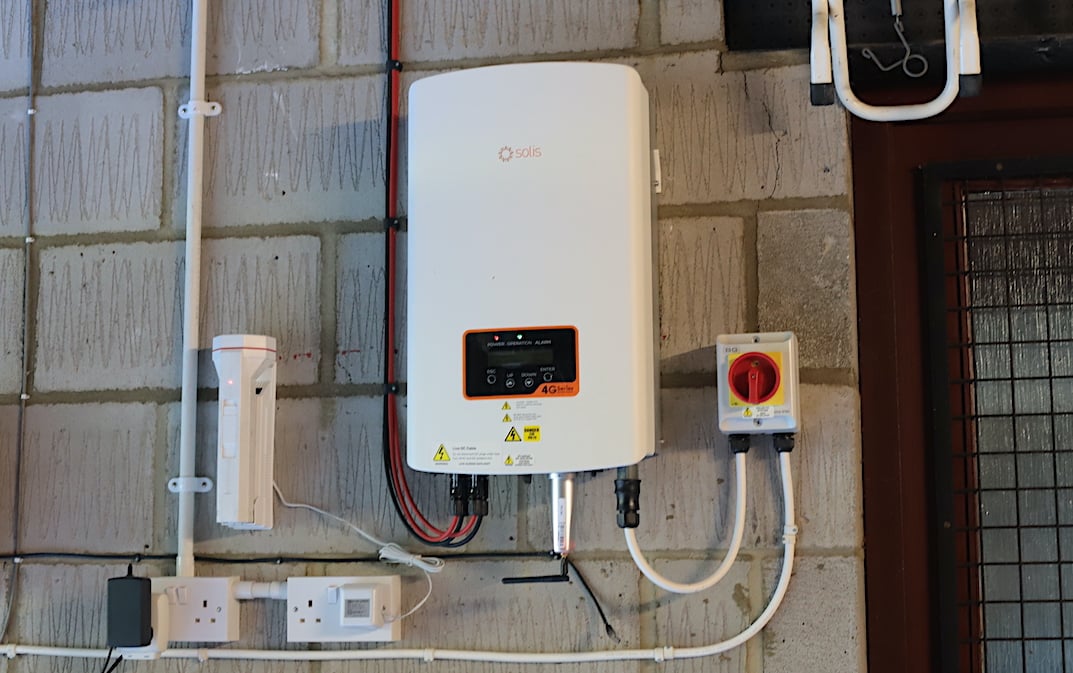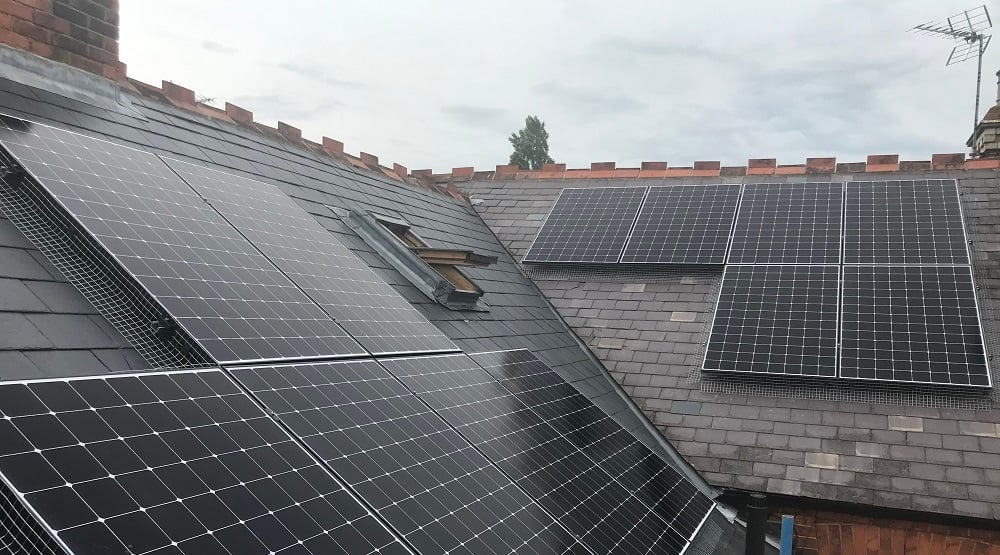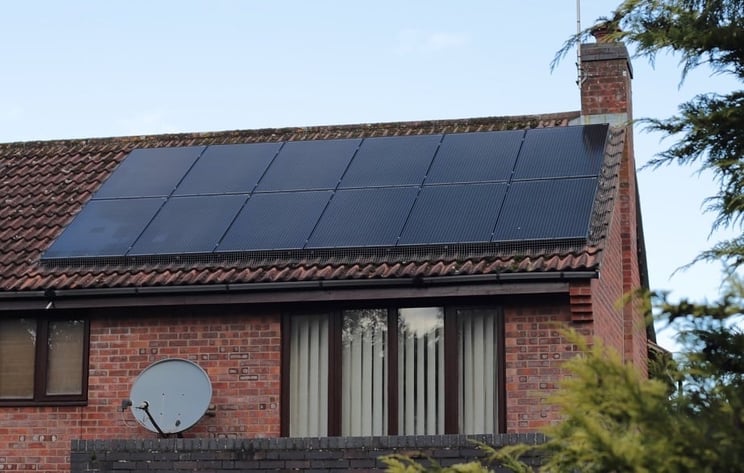We often get enquiries from people who already have solar panels installed on their roof, but are keen to increase the amount of renewable energy they can produce. This might be because they had a battery fitted, or maybe their consumption has gone up with a new heat pump or electric car.
So what steps are there to overcome if you want to add more solar panels to your existing system to try and reduce your electricity bills even further?
Grid permission
The average system size is around 4kWp, or roughly 12 panels, which links back to a common grid restriction where you need permission to install an inverter above 3.68kW on a single-phase supply.
This means the first step to assessing if you can have any extra PV panels will be checking with your local DNO (distribution network operator). Every supply will have a maximum amount of power that can be connected to it, related to how much inverter and battery power you are fitting.
We can help with this process for a £100 fee upfront (deductible from the final contract price). Every supply is different, with some supplies a lot more restrictive than others. You never know what the max export on your supply is until you file an application with the grid, but as a rough rule of thumb, a single-phase supply will not support more than around 4-8kWp with or without a battery.
The limit will depend on the DNO rules, the size of your supply, how old the supply is, how urban or rural you are, the kit you are proposing, neighbouring supplies, cabling and the local transformer. The DNO will run a network design with your proposed system to see if there are any problems.
If you are lucky enough to have a 3-phase supply, these typically allow a lot more capacity, and the limit you need to ask for permission sits at 11.04 kW. This means you are more likely to be able to add extra panels to these supplies as they have more capacity built in.
The application for approval will take up to 11 weeks to come back, at which point the DNO will either allow your extra panels, insist you fit an export limitation device or reduce the system size. Finally, they could only permit the installation with the upgrade of the supply (maybe to 3-phase, or with a new transformer) or cabling. This is usually very expensive and time consuming!
Existing inverters
Any new system will typically be installed on a new separate inverter. This is because string inverters are sized to a specific number of panels when they are installed.
It is nearly always easier and less expensive to leave the old system as is, and instead fit a new totally separate string inverter as this won’t require messing around with existing strings on the roof and mixing older, lower powered panels with higher powered ones on the same inverter or string.

If you have a separate roof for the new panels, such as a newly built detached garage, fitting a new inverter avoids pointlessly bringing long DC runs back to the house loft space, where the existing old inverter may be located.
Micro-inverters allow you to add panels later on if this is something you know you will do in the future (for example, if you know your extension with a nice big roof will be completed in a couple of years, but you need to add solar panels onto the main house now while scaffolding is up). These systems do not use a main inverter unit, but instead have micro-inverters situated underneath the PV panels at roof level which all communicate back to a central monitoring hub.
Feed-in Tariffs (FiT)
The other reason not to swap out existing inverters is if you are on the Feed-in Tariff scheme, you are not allowed to uprate your inverter. The safest plan is to leave the existing inverter as is, and add any new power through a separate inverter which will have its own separate generation meter and will not invalidate your FiT payments.
If you add more PV panels, you will not be eligible for any export payments under the Smart Export Guarantee (SEG) if you are getting the FiT deemed export payments. The FiT is composed of two parts:
-
A payment of up to around 50p / kWh that is paid based on quarterly generation meter readings (the generation side).
-
A deemed 50% payment of up to around 5p / kWh (the export payment).
Exact rates will depend on when you signed up for the FiT and had your system installed.
Under the FiT you were paid a generation and export payment regardless of how much energy you actually used on site, as there was no way to reliably measure export for domestic installations. Nowadays with the SEG, you are only paid for what you actually export to the grid, measured via your smart meter.
This means you can choose to either keep your FiT export and generation payments, and not get any SEG payments on your new panels, or you can give up the export payments only, but keep the generation side. The export for both old and new panels would then be measured by your smart meter, and your account credited by your supplier.
Most customers should stick with their deemed rate, especially if they have a battery installed, which will likely increase your self consumption of PV energy above 50%.
Note that some FiT suppliers will move you over to a measured (no longer 50% deemed) FiT rate if you get a SMETS2 smart meter fitted capable of measuring export. We would advise checking this with your FiT supplier before upgrading the meter.
This means if you do keep both your FiT payments, make sure you will actually use the extra energy from the new panels (maybe by having a battery installed), or any exported energy will essentially be a donation to the grid!

Final considerations
You will need to make sure you have enough space on your roof too; there is not much point only adding an extra two panels on the roof as some of the upfront costs for solar PV (e.g. scaffolding) are similar regardless of the number of panels.
Generally you want to keep panels grouped together and as ‘blocky’ as possible. Lots of panels here, there and everywhere with different orientations will result in a very difficult and expensive installation that is not very attractive financially or aesthetically.
New panels will also look different to your old panels, especially if you have silver framed polycrystalline blue cells. Newer panels tend to be all black for domestic installations, but it will be unlikely we can source panels that look identical to your existing ones, so there will be a visible difference if the new panels join those on an old roof.
Lastly, any new panels or inverters might not be power cut protected by your existing battery system. For Powerwall, our best selling battery, the backup power will only be able to support single-phase string inverters up to around 6-7kW unless you have multiple units. This means if you have 6kW already, and add a new 3kW inverter, the new inverter will work fine with the battery when you are grid connected, but it won’t work during a power cut.
For more information on residential solar panels, download our guide for a 15 minute crash course:










